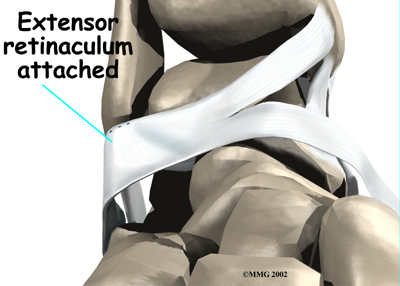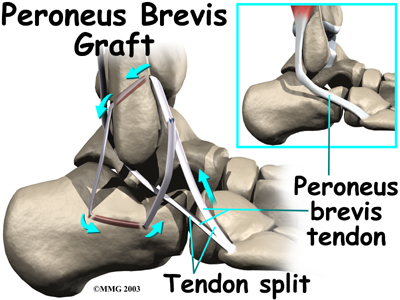Non-surgical Rehabilitation
Even if you don't need surgery, you will likely need to follow a program of rehabilitation and exercise for your ankle injury. When you visit Eastwood Physiotherapy for physiotherapy in Edmonton, we can create a program to help you regain ankle function. It is very important to improve strength and coordination in the ankle.
Swelling and pain are treated with modalities like ice or electrical stimulation. If swelling in the ankle is severe, our therapist may also apply massage strokes from the ankle toward the knee with your leg kept in an elevated position. This helps get the excess tissue fluid moving out of the ankle and back into circulation. Your physiotherapist may issue a compression wrap and instruct you to wrap your ankle and lower limb and to elevate your leg.
Many of the specific nonsurgical treatment options that we use at Eastwood Physiotherapy depend on whether your problem is an ankle sprain or ankle instability.
Ankle Sprain
The best results after an ankle sprain come when treatment is started right away. Our physiotherapists will use treatments to stop the swelling, ease pain, and protect the injured ankle from weight-bearing activities. A simple way to remember the essential steps of initial treatment is by the letters in the word RICE. These stand for rest, ice, compression, and elevation.
- Rest: The injured tissues in the ankle need time to heal. Crutches will prevent too much weight from being placed on the ankle in the early days after injury.
- Ice: Applying ice can help ease pain and may reduce swelling.
- Compression: Gentle compression pushes extra swelling away from the ankle. This is usually accomplished by using an elastic wrap or compression sock.
- Elevation: Supporting your ankle above the level of your heart helps control swelling.
Our physiotherapists may also apply specific hands-on treatment called joint mobilization to improve normal joint motion. These treatments restore the natural gliding motion between the ankle bones that may be restricted following injury. This form of treatment speeds healing and improves function after an ankle sprain. It may also help clients to return more quickly to their activity or sport.
Small nerve sensors inside the ligament are injured when a ligament is stretched or torn. These nerve sensors give your brain information about the position of your joints, a sensation called proprioception or position sense. For example, nerve sensors in your arm and hand give you the ability to touch your nose when your eyes are closed. The ligaments in the ankle work the same way. They send information to your nervous system to alert you about the position of your ankle joint. Our physiotherapist will help you retrain your position sense as a way to steady the ankle joint and protect you from spraining your ankle again.
Another effective treatment for ankle sprains is disc training using a circular platform with a small sphere under it. While sitting or standing, patients place their feet on the platform and work the ankle by tilting the disc in various directions. This form of exercise strengthens the muscles around the ankle, and improves balance and joint position sense.
Your physiotherapist may also recommend medications. Mild pain relievers may help with the discomfort. Anti-inflammatory medications can help ease pain and swelling and get people back to activity sooner after an ankle sprain. These medications include common over-the-counter drugs such as ibuprofen. Talk to your doctor or pharmacist if you have specific questions about which pain reliever is right for you.
As treatment progresses, our physiotherapist will have you gradually begin putting weight through the joint. Casts are uncommon unless the sprain is very severe or the ankle is broken because soft tissues weaken when they are kept immobile. Braces are available that can be worn to support the ankle, but still allow weight bearing. These are the most popular treatment for helping reduce strain on the healing tissues.
When you get full ankle movement, your ankle isn't swelling, and your strength is improving, our physiotherapist will help you gradually get back to your work and sport activities. We may issue an ankle brace for athletes who intend to return quickly to their sport.
Although the time required for recovery is different for each patient, healing of the ligaments usually takes about four to six weeks, but swelling may be present for several months.
Physiotherapy for Ankle Instability in Edmonton
If the ankle ligaments do not heal adequately, you may end up with ankle instability. This can cause the ankle to give way and feel untrustworthy on uneven terrain. If your ankle ligaments do not heal adequately following an ankle sprain, your physiotherapist may suggest several things.
We may recommend changes in your footwear to help keep your ankle from turning in. Placing a heel wedge under the outer half of your heel blocks the ankle from rolling, as does a flared heel built into your shoe. In extreme cases, our therapist may prescribe a plastic brace, called an orthosis, to firmly hold your ankle from rocking side to side. Some patients feel a sense of steadiness from wearing high-topped shoes. Patients with ankle instability should avoid wearing high-heeled shoes.
Physiotherapy treatments at Eastwood Physiotherapy will likely be initiated to help restore joint range of motion, strength, and joint stability. Many people who have ankle instability have weakness in the muscles along the outside of the leg and ankle. These are called the peroneal muscles. Our physiotherapist can teach you strengthening exercises for these muscles to help you control the ankle joint and improve joint position sense.
Post-surgical Rehabilitation
Patients usually take part in formal physiotherapy after surgery. Rehabilitation after surgery can be a slow process. Although the time required for recovery varies, as a general guideline you should expect to attend physiotherapy sessions for two to three months, and should expect full recovery to occur over six months.
Rehabilitation proceeds cautiously after reconstruction of the ankle ligaments. Most patients are prescribed an ankle brace to wear when they are up and about, and they are strongly advised to follow the recommendations about how much weight can be borne while standing or walking. You may be restricted to non-weight bearing for up to 12 weeks. We will also provide you with instructions to make sure you are using crutches safely and only bearing the recommended amount of weight on your foot.
Your first few physiotherapy treatments are designed to help control pain and swelling from the surgery. Our physiotherapist may use ice and electrical stimulation treatments during your first few therapy sessions, progressing to massage and other hands-on treatments to ease muscle spasm and pain. Our physiotherapist will use treatments to help improve your ankle range of motion without putting too much strain on the healing ligaments.
After about six weeks we may have you begin doing more active exercise. Exercises are used to improve the strength in the peroneal muscles. Our physiotherapist in Edmonton will also help you retrain position sense in the ankle joint to improve the stability of the joint.
At Eastwood Physiotherapy, our goal is to help you keep your pain under control, improve range of motion, and maximize strength and control in your ankle. When your recovery is well under way, regular visits to our office will end. Although we will continue to be a resource, you will be in charge of doing your exercises as part of an ongoing home program.
Eastwood Physiotherapy provides physiotherapy in Edmonton.
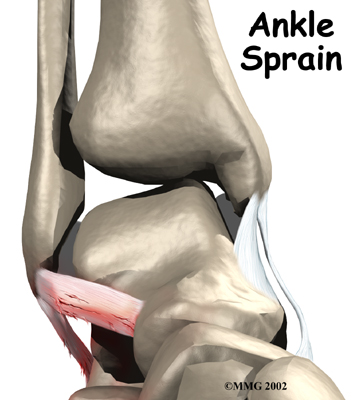


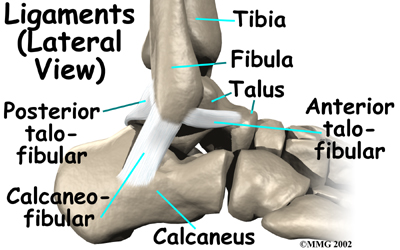


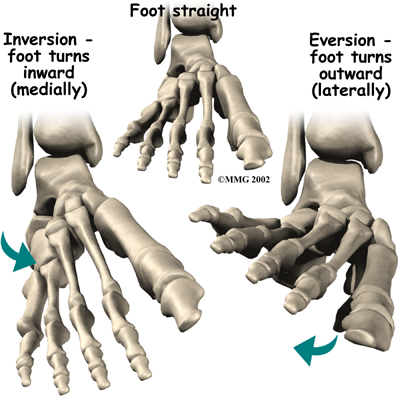
 Initially the ankle is swollen, painful, and may turn ecchymotic (bruised). The bruising and swelling are due to ruptured blood vessels from the
Initially the ankle is swollen, painful, and may turn ecchymotic (bruised). The bruising and swelling are due to ruptured blood vessels from the 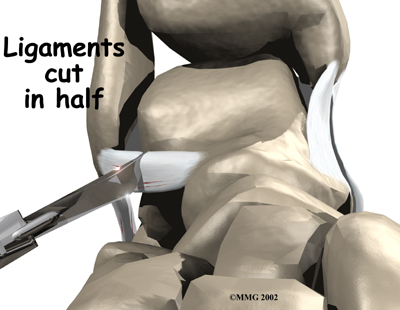
 Step 3
Step 3
